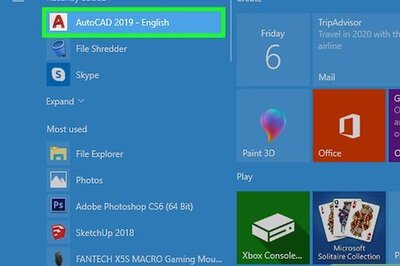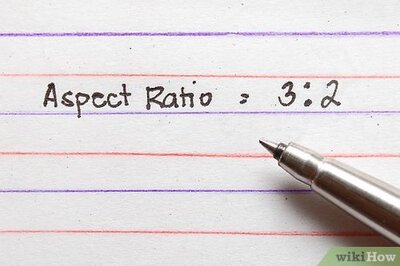
views
As a frequent visitor to the national archives of India, I come across innumerable documents that speak of ‘raids’ by the people of northeast upon the British.
These documents are dated as back as 1850s and thus, obviously, these are official records of the colonial government. The British have extensively recorded each attack they faced in the hills (and plains) of the northeast in the name of raid.
Now what is a raid exactly? According to the Cambridge dictionary, a raid is defined as ‘the act of entering a place by force in order to steal from it’ or a ‘short sudden attack, usually by a small group of people’.
This initially made me chuckle, because ironically, all of the Britain’s colonial empire was born out of it. More informally, entering a place by force in order to steal, was the British expertise. But this also gave birth to a bunch of questions in my mind.
The People
For starters, consider this -- the communities residing in today’s northeast of India are highly peace-loving people. They were humble and welcoming not just with each other but also to entities that historically did not belong there. Communities living in landlocked hills had a traditional practice of incorporating sea shells in their attire -- a clear indication of trade; and all these are highly unlikely to take place within an aggressive community. Peace and stability are pre-requisites for any civilisational activity be it trade, agriculture or mere sustenance.
Then what could possibly be the reason for such huge numbers of attacks as recorded by the British record keepers? What could have led these peaceful people into violence?
What were the reasons behind the dissatisfaction that they possessed for the British? And most importantly, what fate fell upon them that they had to pick arms in retaliation?
Background
To answer all these questions, we need to start from the very beginning.
While the British rule in India began in 1757 after the battle of Plassey, the British established their formal military and political control over Assam and Manipur in 1826 after their victory against the Burmese army.
The British rule in India was stationed in Bengal, why then did a territory literally adjacent to Bengal remain untouched for almost a hundred years?
There is no debate about the fact that the prime focus of colonial powers was economic gain. All they wanted was to make economic profits. So, if any territory did not promise substantial profit or scope of business, the British saw no reason for colonising it.
That was until 1823, when a Scot named Robert Bruce realised that tea production was a possibility in the foothills of present-day Assam. He was welcomed with a tea-like drink by the Singfo King. He also wrote a letter to his brother Charles informing him about this finding.
Till 1823, tea was China’s monopoly which the United Kingdom was desperately trying to cease as tea was a lucrative and profitable business.
Robert’s discovery in Assam was the silver lining that Britain needed. Not just tea, Assam shined as an economic asset with the discovery of valuable forest products such as timber, ivory and innumerable wildlife.
Besides, the survey of Lt. Wilcox in 1825 extensively identified the source of rich coal fields and petroleum reserves.
Mark the years here, in 1823, Robert Bruce finds out about tea cultivation as traditional beverage in Assam’s Rangpur and just three years later, the East India Company (EIC) defeated the Burmese army, signed the Treaty of Yandaboo and gained full control over Assam and Manipur.
The communities living in the hills of northeast had fought along with the British against the Burmese, but after the war was over they expected the British to leave them alone to conduct their affairs as they had been doing traditionally.
But the British were no angels with halos who would help the people in protecting their lives and then leave. They gained control and started tea plantation.
Huge tracts of land in the foothills, particularly in the Brahmaputra and Barak-Surma Valley, were assigned for tea plantations which only served the company’s purpose of filling its coffers.
However, in addition to this, they imposed several restrictions, laws, and rules upon the locals residing in the hills, plains and foothills alike -- people who only wanted to live an undisturbed life.
They disturbed the khap system, under which people of the hills were given land in the plains to conduct their agricultural activities. This led to major sustenance and food scarcity problems.
Also, the communities that did not agree to the terms of the company had the worst fate to suffer.
Having set and explained the background to how and why the British entered Assam, what were their motives and what changes they brought in the lives of people; I will now take the liberty to explain in depth the case of Lushai community.
The Lushais
The Lushai Hills are located in present-day Mizoram, which also shared proximity and border with present-day southern Assam where the Barak Valley is situated.
While the Barak foothills was a prime tea plantation location, the areas were also staple routes for the navigation of people residing in Lushai hills. The people of the Lushai community have elaborate trade with people of Barak and Surma Valley.
They also shared cordial relations with Bangla-speaking people, Tripuri, Jamatia, and Synteng (also known as ‘Pnar’) people.
With this, the historical trade route from Samatata or Samatat (in present-day in Bangladesh) to Pagan (in present-day Myanmar) which crossed both Barak Valley and Lushai hills was adversely affected.
This is a clear indication of how important it was for the people living in Lushai hills to have free navigation through the tracts of Barak Valley for connectivity purposes.
However, as the Barak Valley was used for economic cultivation of tea, all the markets located there, the routes that transverse the valley, the communities that resided there, were all either disturbed or uprooted.
This immense meddling was the reason behind the dissatisfaction and the consequent retaliation. The chiefs of the Lushai community took arms against these foreign rulers and decided to win back their free life.
This is the best example of how the imposition of rules upon the local people led to an armed resistance against the British because, in order to protect their plantations and ensure maximum gains, the latter made several changes in the socio-political landscape.
Raids or Struggle for Independence?
In 1872, the first expedition was carried out in the Lushai hills by the British after a local conflict broke out between Pataie and Manipuri people.
This was done solely to gain full control of the Lushai hills, subjugate the people, and thereafter, mislead them into following orders of the British. The British decided to use full-fledged army against the irreproachable communities just because of a local dispute.
It was after this that the Lushai and Paitaie communities decided to stand up for themselves and to wave off any imposed rule that hindered their natural way of living and hindering people’s natural way of living was all that the British did for their monetary gain.
The British also have a very well-hidden history of atrocities and barbarianism that they showered on the native people. There are records of them burning down entire villages down if they did not accept British rule.
Lushai chiefs who did not accept subjugation were punished or killed or even sentenced to Kalapani in Andaman Islands.
Some of the valiant Lushai chiefs who fought off British were Lalchoka, Lalrou, Lalrinhia, Vannuailal and Vanpilal. They sacrificed their lives to ensure that their people did have to live lives at a coloniser’s terms.
They were proud, free men, who would not accept chains, who would not give up on their way of life and were ready to go to any extent. These communities, thus, evolved a tactic of gradually weakening the company’s rule by gradually breaking its bones.
Attack on headquarters, officials, tea gardens that the British have recorded as ‘raids’ (as if these native people were greedy thieves) were actually nothing but their retaliation to the rules that the British were imposing and the atrocities that they faced.
Just like the ‘mutiny’ of 1857 was first war of Independence, the attacks by the native people of northeast on the British were their struggle for Independence.
Would you expect someone to sit silent when their traditional land was being encroached upon, their natural ways were being diluted and while they were gradually being converted into subjects?
Which dignified human being would not pick all his courage and decide to fight in such situation. The attacks that are termed ‘raids’ were tactful war methods used by the native community.
Conclusion
We as fellow Indians, who have always taken pride in heroes of our national independence movement, must be the pioneers of identifying smaller contributors who fought smaller battles, but had huge impacts.
We must now, flip the coin that the age-old narratives have been showing us to see its other side. We must question every pre-decided notion with a ‘why’ and that is how we will step closer to the truth like I did here.
After all it was only a ‘why’ that led me into thinking that why would peace-loving people pick arms? Why would the British use army? And why would self-sustaining harmonies communities carry out raids? And thus, was revealed the truth of British atrocities, selfishness and insensitivity.
Our questions are the only way of unravelling the lies that the British have skillfully hid from us and they have also been facilitated by a bunch of misinformed Indian historians and intellectuals.
And this, is the beginning of our conscious questioning!

















Comments
0 comment